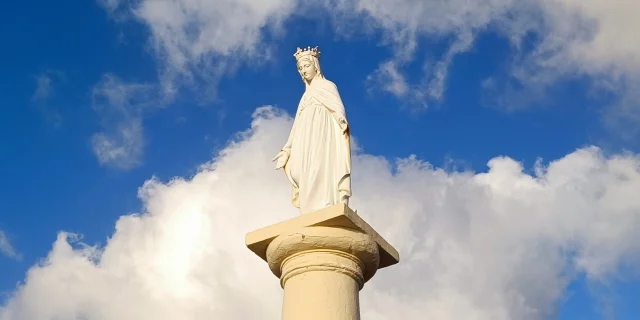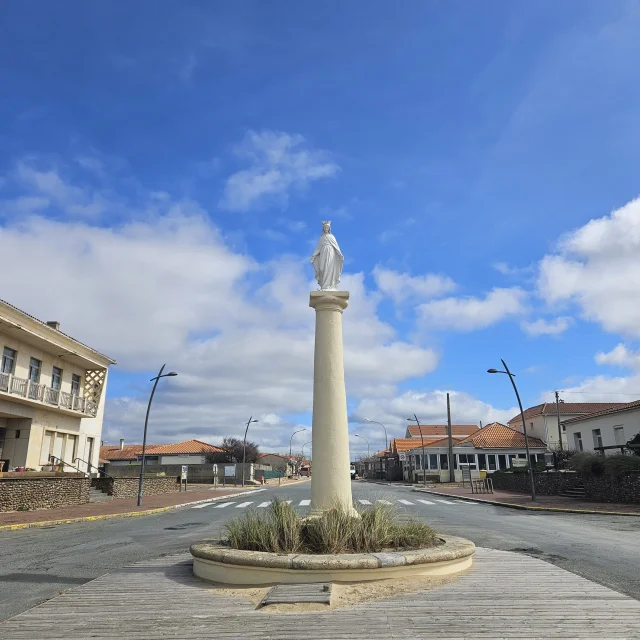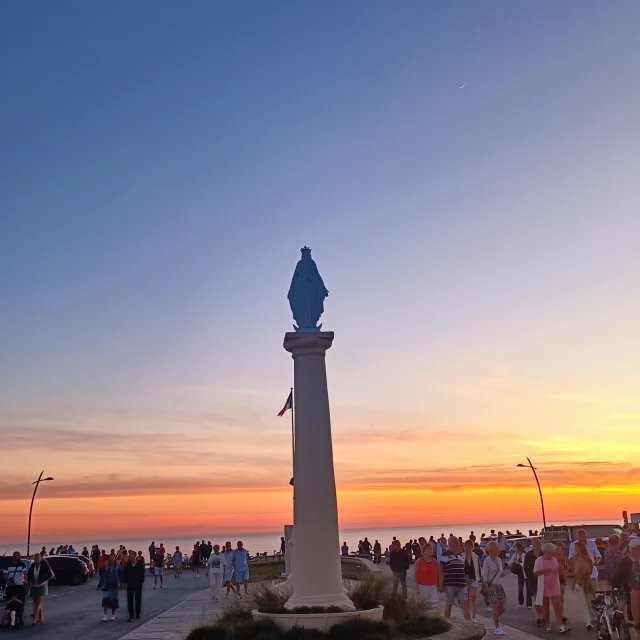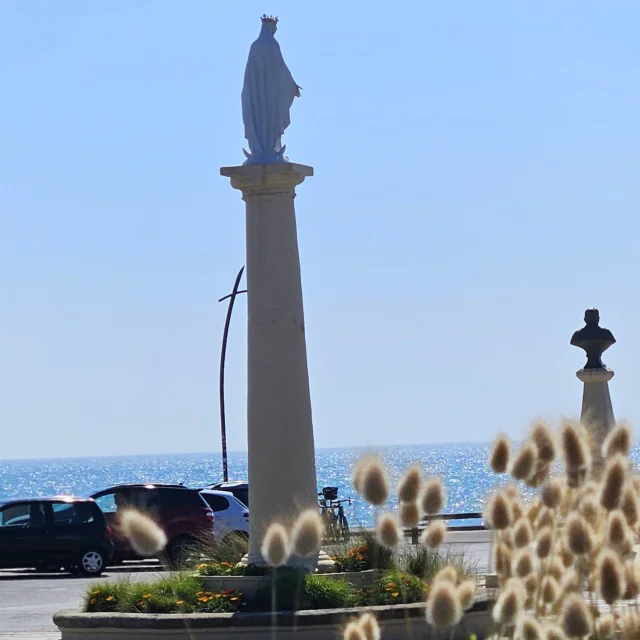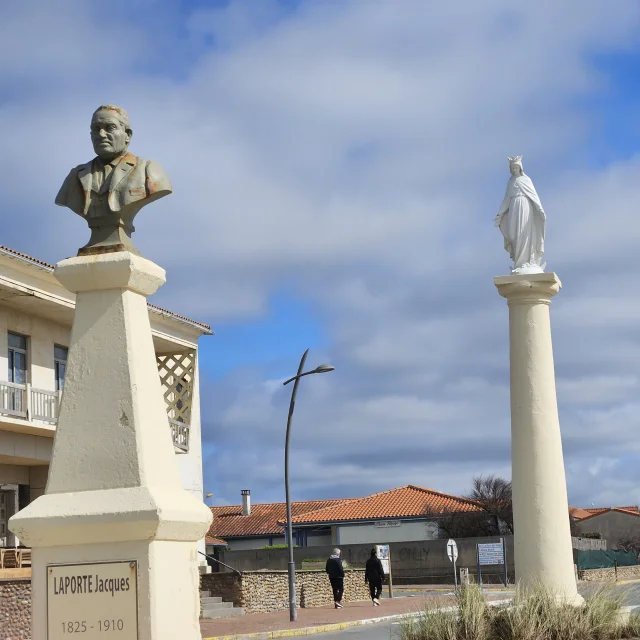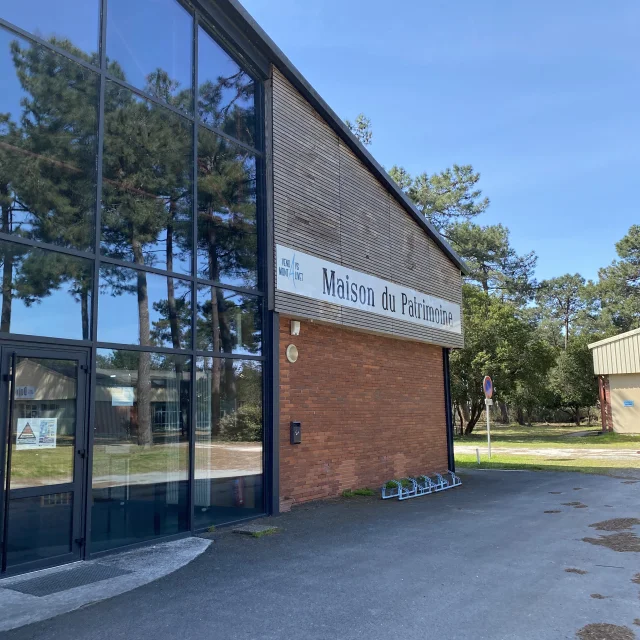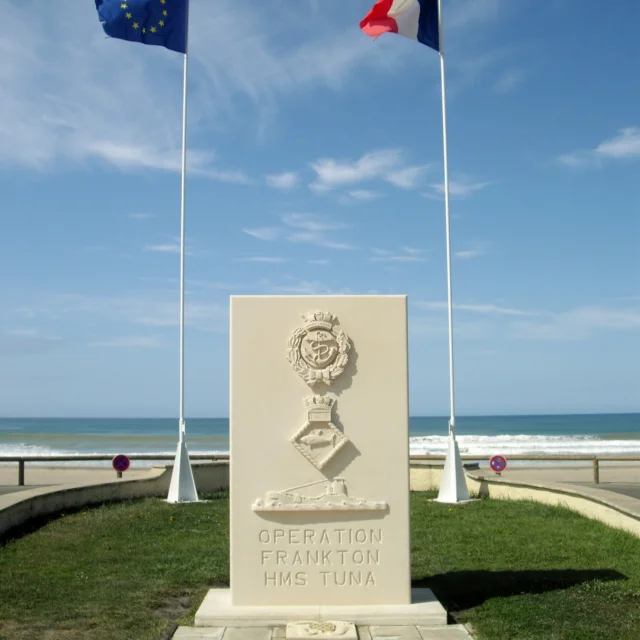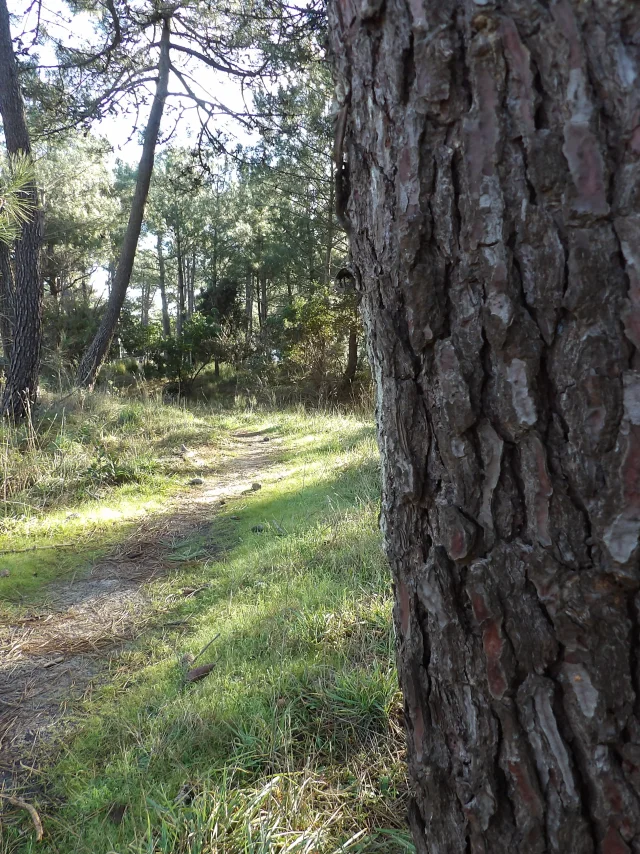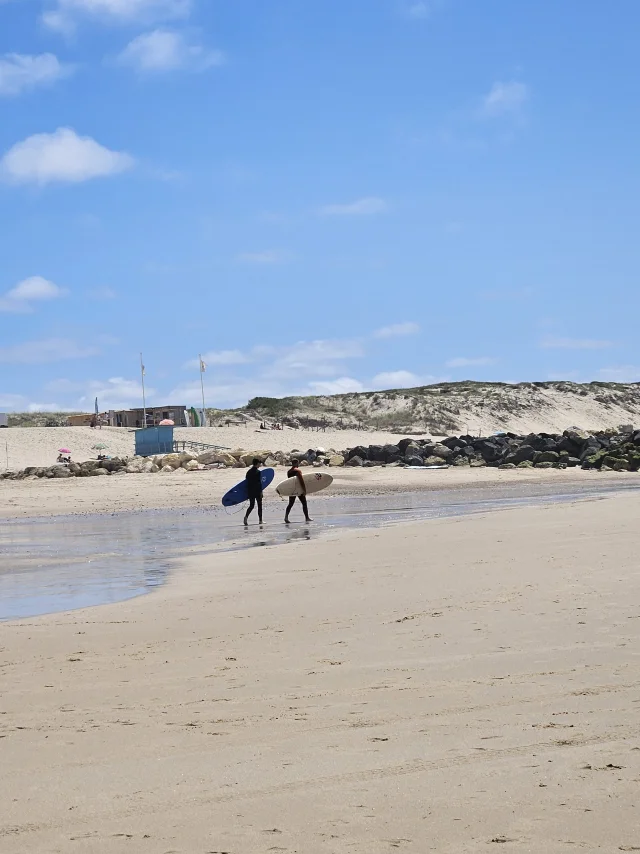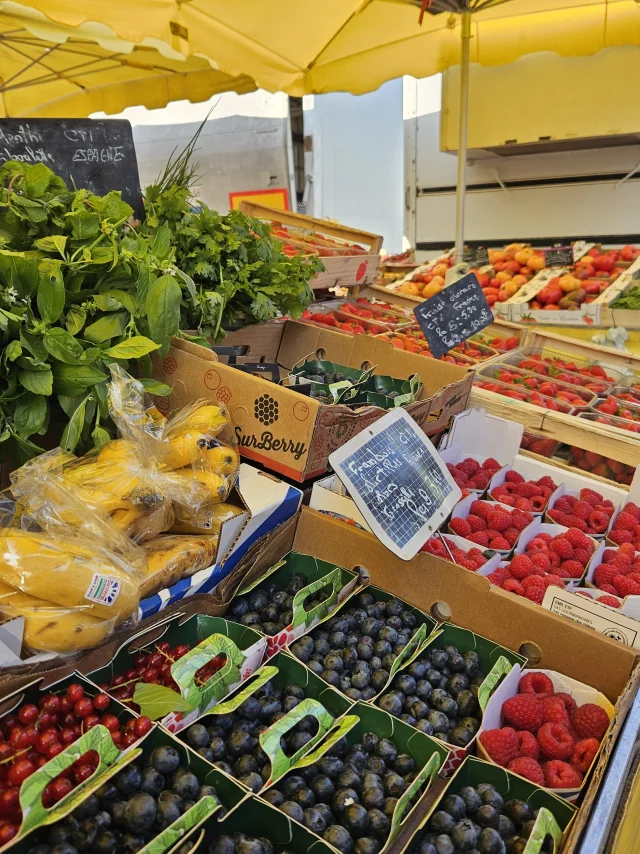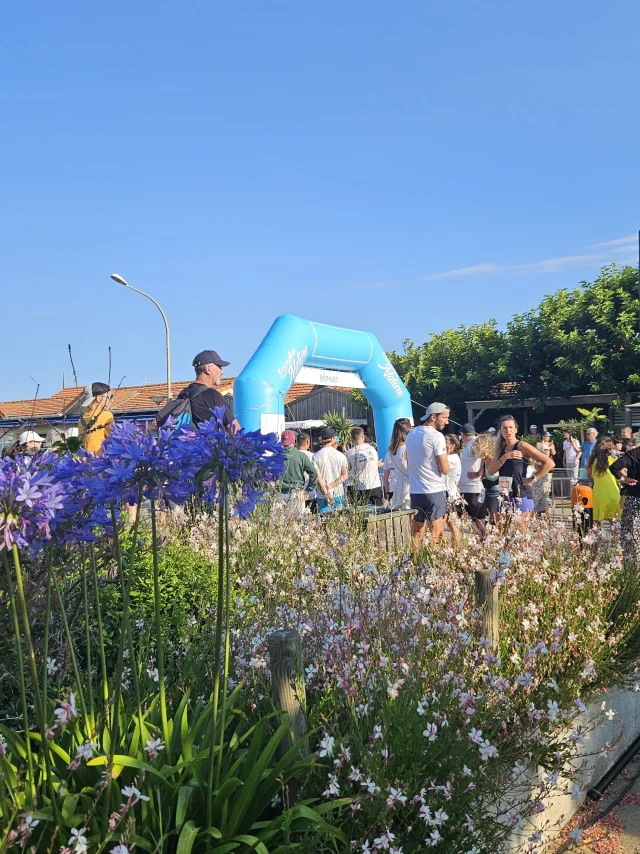They keep an eyeabout us
The Virgin stands like a lighthouse on the waterfront. Since 1868, she has been pointing towards the horizon and keeping an eye on the ocean. The Virgin Mary is said to represent a guide and protection for sailors.
A must-see monument in the resort, she is best placed to contemplate the beautiful sunsets.
Behind her, a bust pays tribute to Jacques LAPORTE, founder of Montalivet.
💡🍀Alittle tip: walk around the column and luck will smile on you!
